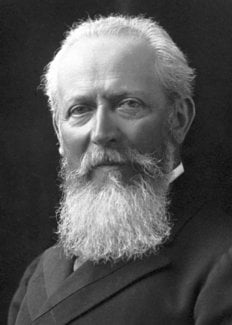Otto Wallach
Biographical

Otto Wallach was born on March 27, 1847, in Königsberg, Germany, the son of Gerhard Wallach and his wife, née Otillie Thoma. His father was a high-ranking civil servant, who later became Auditor General at Potsdam.
During his early school years at the humanistic “Gymnasium” at Potsdam, Wallach had a profound liking for history and art – in those days subjects like chemistry were hardly taught at secondary-school level.
In 1867 he went to Göttingen to study chemistry with Wöhler, Fittig and Hübner but soon left for Berlin to study for one semester under A.W. Hofmann and G. Magnus. After his return to Göttingen he worked so hard that he managed to obtain his doctor’s degree – in 1869 under Hübner – after studying for only five semesters. (At that time working hours at the Wöhler laboratory were from 7 a.m. till 5 p.m., after which gas was turned off and some work had to be rounded-off under the light of privately bought candles.) His thesis dealt with the position isomers in the toluene series.
In 1869 and 1870 he was assistant to H. Wichelhaus in Berlin, with whom he worked on the nitration of b-naphthol. Easter 1870 found him in Bonn with Kekulé. The latter, himself an artist at heart and who once seriously considered making architecture his profession, had written to Wallach: “It will not hurt you to come to Bonn. Here we are leading a scientific artist life.” That same year, however, Wallach had to leave Bonn for military service in the Franco-Prussian war.
After the war he tried for the third time to establish himself in Berlin, working with a newly founded firm “Aktien-Gesellschaft für Anilin-Fabrikation” (later “Agfa”), but his fragile health could not stand the noxious fumes of the factory, and in 1872 he returned to Bonn, where he stayed for 19 years. He first became assistant in the organic laboratory, and later was appointed Privatdozent. In 1876 came his appointment as Professor Extraordinary. When in 1879 the Chair of Pharmacology became vacant he was obliged to occupy it, which forced him to specialize in this direction. It was during this period that he discovered the iminochlorides by the action of phosphorus pentachloride on the acid amides. But when Kekulé drew his attention to the existence of an old forgotten cupboard full of bottles containing essential oils, and invited him to make a study of the contents, he became absorbed in the matter, thus entering a field of study in which he was to be the eminent pioneer for more than a decade, and which was to be his main life-work, crowned with the highest possible distinction.
Already in his first publication (1884) he raised the question of the diversity of the various members of the C10H16 group, which in current practice at that time came under a multitude of names ranging from terpene to camphene, citrene, carvene, cinene, cajuputene, eucalyptine, hesperidine, etc. Utilizing common reagents such as hydrogen chloride and hydrogen bromide, he succeeded in characterizing the differences between the structure of these compounds. A year later he could establish that many of them were indeed identical. In 1909 he published the results of his extensive studies in his book Terpene und Campher, a volume of 600 pages dedicated to his pupils.
Mention should also be made of his other investigations; the conversion of chloral into dichloroacetic acid, the series of studies on the amide chlorides, imide chlorides, amidines, glyoxalines, etc., his work on azo dyes and diazo compounds, and many others. They all denote his practical skill: like Emil Fischer and Adolf von Baeyer, he relied more on carefully performed experiments than on theoretical deliberations.
In 1889 he was appointed Victor Meyer’s successor in Wöhler’s Chair, which made him at the same time Director of the Chemical Institute at Göttingen. He retired in 1915 from these posts when at the start of World War I six of his assistants were killed in action.
Wallach received the Nobel Prize in 1910 for his work on alicyclic compounds. His other honours included Honorary Fellowships of the Chemical Society (1908), Honorary Doctorates of the Universities of Manchester, Leipzig and the Technological Institute of Braunschweig. In 1912 he became Honorary Member of the Verein Deutscher Chemiker. He received the Kaiserlicher Adlerorden III. Klasse (Imperial Order of the Eagle) in 1911, the Davy Medal in Gold and Silver in 1912, and in 1915 the Königlicher Kronorden II. Klasse (Royal Order of the Crown).
Wallach remained a bachelor throughout his life, and died on February 26, 1931.
This autobiography/biography was written at the time of the award and first published in the book series Les Prix Nobel. It was later edited and republished in Nobel Lectures. To cite this document, always state the source as shown above.
The Nobel Foundation's copyright has expired.Nobel Prizes and laureates
Six prizes were awarded for achievements that have conferred the greatest benefit to humankind. The 14 laureates' work and discoveries range from quantum tunnelling to promoting democratic rights.
See them all presented here.
